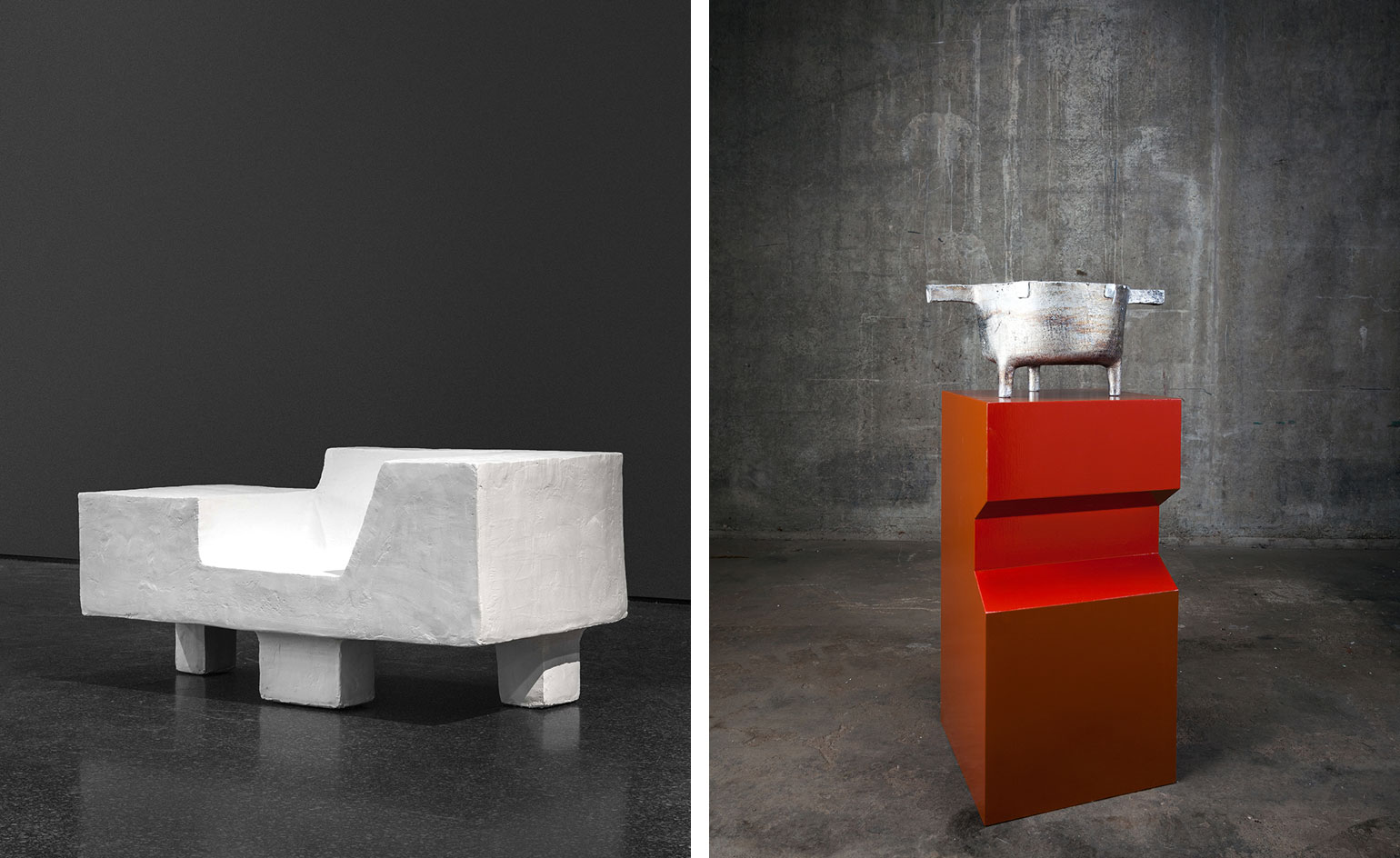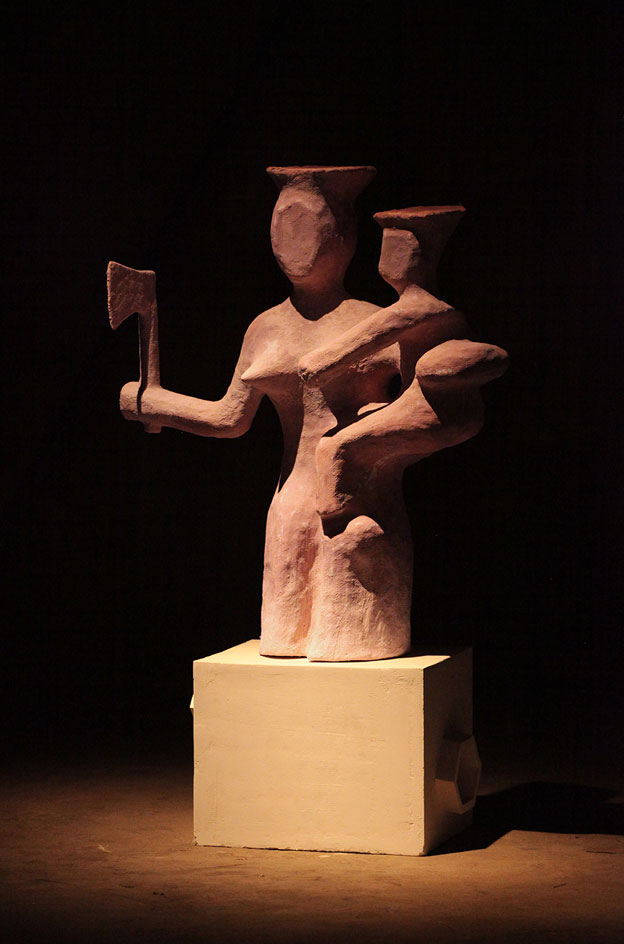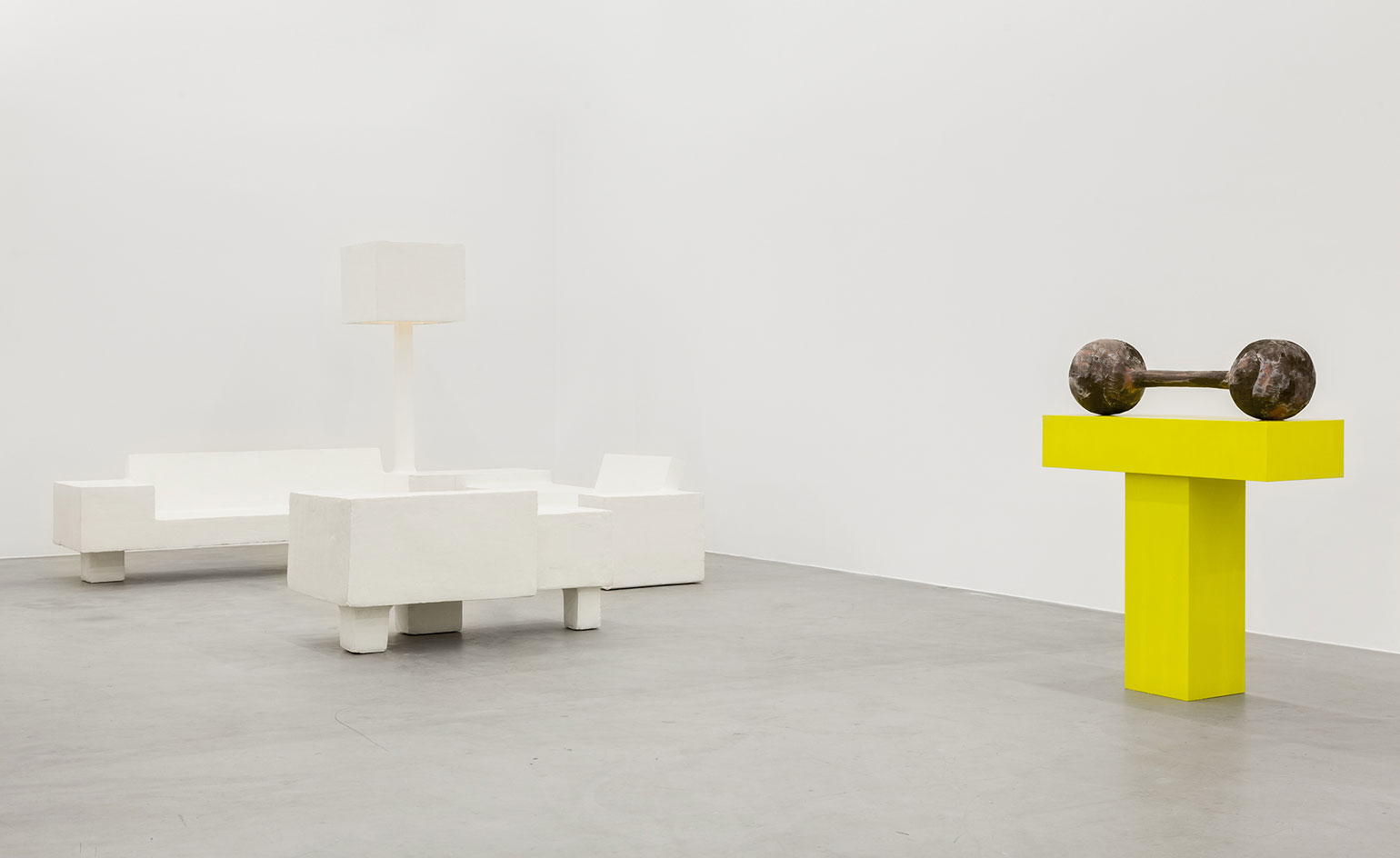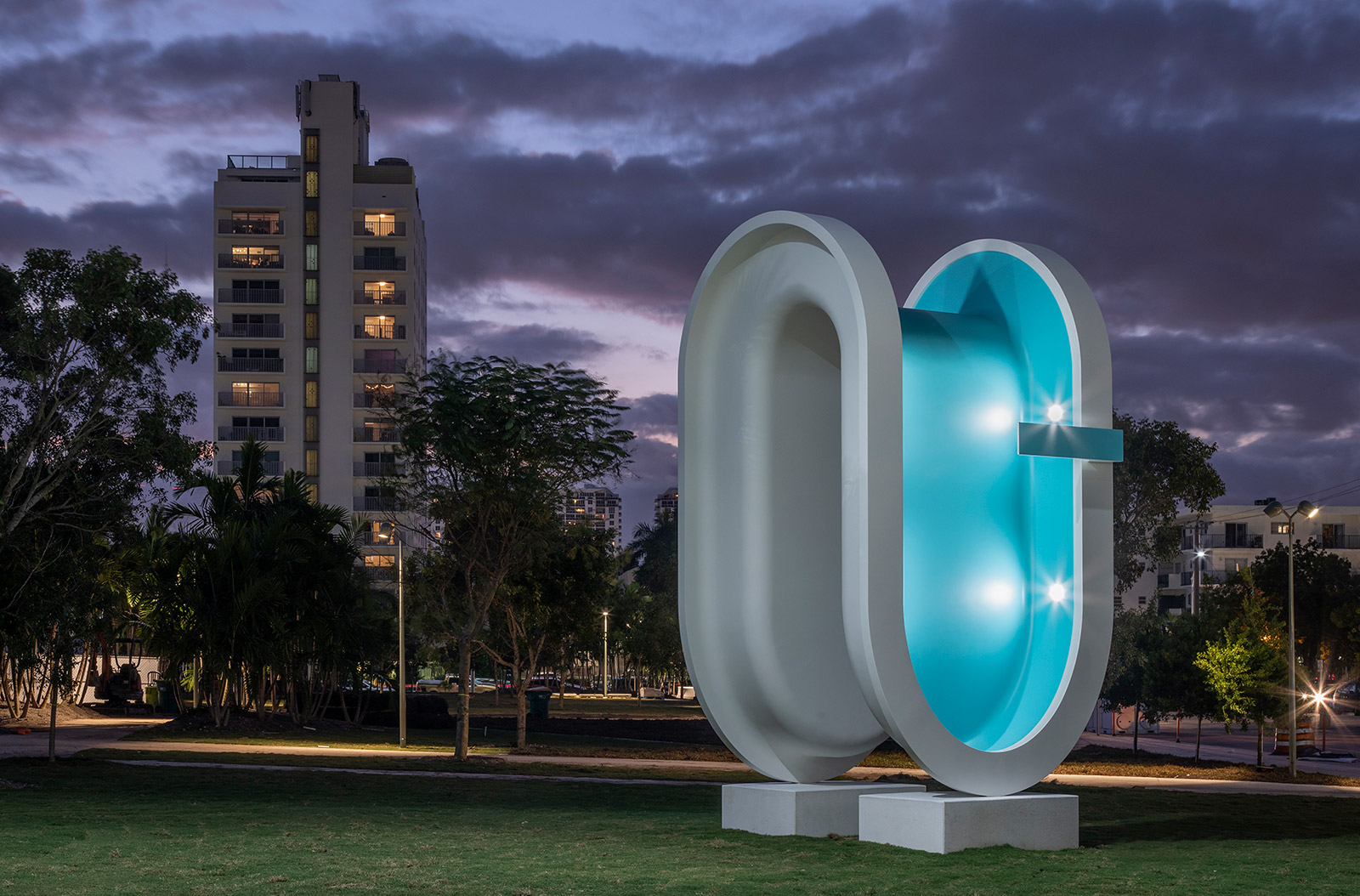
More than ever, the world needs a new perspective to bring sanity to humanity’s future; and we might find inspiration – and even some answers – from the Dutch artist Joep Van Lieshout’s new show at the Almine Rech Gallery in Brussels, Belgium.
We are no strangers to Van Lieshout’s paradoxical ideas of Utopia, which can easily be seen in the artist’s earlier works of imaginative human dwellings and living units. The new show, 'Primitive Modern,' displays the development and the transition between the two recent bodies of work 'New Tribal Labyrinth' and 'Neo-futurism.'
In 'New Tribal Labyrinth,' his first vision for the future is a journey back to the past: 'I foresee the emergence of a new tribal world, a primitive society where production takes centre stage. This world will see a return to farming and industry – both of which have currently been banished from our society – and a re-establishment of our relationship with materials, which has been lost. In this new world, ethics will be of less importance; instead, rituals will be re-evaluated, and will offer guidance to the tribes of the future,' he says. Van Lieshout has created all the necessary equipment for his fictional tribes, ranging from items of worship and sacrifice to objects for daily use, dwellings and machines to make the huge Gesamtkunstwerk.
From his labyrinth Van Lieshout emerges into an advanced future. In Neo-futurism, Van Lieshout’s world developed from crude production to technology and progress and the 20th century art movement that promoted the idea of Futurism, but he also contemplates radical change, conflicts and even aggression as necessary components of inspiration. Look at the functional sculpture Les Brutalist, which borrows the geometric shapes from the modernist movements of the early 20th century whilst focusing on man’s most primitive needs.
Looking at the past and future, the primitive and the modern, art and science – as well as utopia and dystopia – to be discussed as ways to build on the ruins of the past.

The show displays the development and the transition between the two recent bodies of work ’New Tribal Labyrinth’ and ’Neo-futurism.’ Courtesy: Joep van Lieshout, Primitive Modern, Almine Rech Gallery Brussels, ©2015 Sven Laurent - Let me shoot for you.

Black Madonna, 2015. Photography: ©Atelier Van Lieshout

’’I foresee the emergence of a new tribal world, a primitive society where production takes centre stage. This world will see a return to farming and industry – both of which have currently been banished from our society – and a re-establishment of our relationship with materials, which has been lost’ Says Van Lieshout. Courtesy: Joep van Lieshout, Primitive Modern, Almine Rech Gallery Brussels, ©2015 Sven Laurent - Let me shoot for you.

Left: AVL/GK, 2015. Shaped like a dumbbell, this sculpture can be seen as a tribute to Austrian artist Guenther Kraus, who used similar designs in his work. Right: Untitled, 2015. This work references both Michelangelo’s Pietà and his sculpture group of the sorrowful Virgin Mary in Rome’s St. Peters Basilica. Photography: ©Atelier Van Lieshout.
INFORMATION
'Primitive modern' is on view till 19 December. For more information, visit the Almine Rech Gallery website.
ADDRESS
20 Rue De l'Abbaye
B-1015 Brussels
Belgium
Receive our daily digest of inspiration, escapism and design stories from around the world direct to your inbox.
Yoko Choy is the China editor at Wallpaper* magazine, where she has contributed for over a decade. Her work has also been featured in numerous Chinese and international publications. As a creative and communications consultant, Yoko has worked with renowned institutions such as Art Basel and Beijing Design Week, as well as brands such as Hermès and Assouline. With dual bases in Hong Kong and Amsterdam, Yoko is an active participant in design awards judging panels and conferences, where she shares her mission of promoting cross-cultural exchange and translating insights from both the Eastern and Western worlds into a common creative language. Yoko is currently working on several exciting projects, including a sustainable lifestyle concept and a book on Chinese contemporary design.
-
 ‘I want to bring anxiety to the surface': Shannon Cartier Lucy on her unsettling works
‘I want to bring anxiety to the surface': Shannon Cartier Lucy on her unsettling worksIn an exhibition at Soft Opening, London, Shannon Cartier Lucy revisits childhood memories
-
 What one writer learnt in 2025 through exploring the ‘intimate, familiar’ wardrobes of ten friends
What one writer learnt in 2025 through exploring the ‘intimate, familiar’ wardrobes of ten friendsInspired by artist Sophie Calle, Colleen Kelsey’s ‘Wearing It Out’ sees the writer ask ten friends to tell the stories behind their most precious garments – from a wedding dress ordered on a whim to a pair of Prada Mary Janes
-
 Year in review: 2025’s top ten cars chosen by transport editor Jonathan Bell
Year in review: 2025’s top ten cars chosen by transport editor Jonathan BellWhat were our chosen conveyances in 2025? These ten cars impressed, either through their look and feel, style, sophistication or all-round practicality
-
 Elmgreen & Dragset give poolside lounging a new slant in Miami
Elmgreen & Dragset give poolside lounging a new slant in MiamiThe Scandinavian duo’s Bent Pool is the final sculpture in a series of site-specific works to be permanently installed in and around the Miami Beach Convention Center
-
 Appetite for art: Atelier Van Lieshout spills its guts at Ruhrtriennale
Appetite for art: Atelier Van Lieshout spills its guts at Ruhrtriennale -
 Cave man: inspecting Atelier Van Lieshout’s transcendental work
Cave man: inspecting Atelier Van Lieshout’s transcendental work